Tips for gardening and homesteading that are free or low cost and make a big impact, I’ll take ’em! It’s that time of year that many of us are reflecting on what we can do next year to have a better harvest and save money on projects and other stuff to run the homestead.
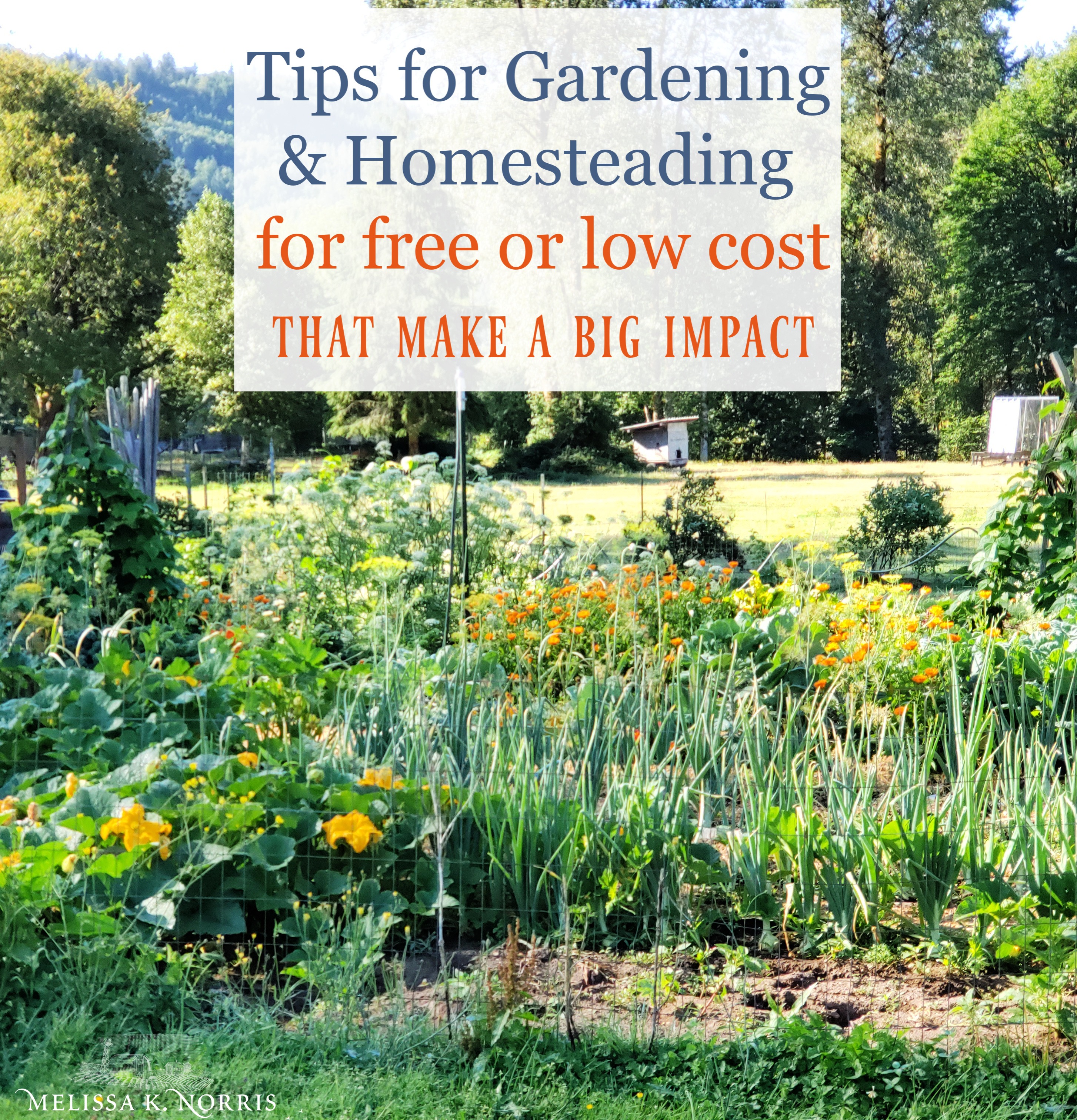
Most of us a a little stressed when we have a lot to do and can’t always tackle what feels like really huge projects. However most of us can find ways to work on the smaller things. Amy from Sow Edible Podcast has shared a lot of great tips of small things that can be done for free or on a small budget and I’m excited to share them with you.
Listen in below to the full podcast, Episode #210 Cheap Garden Ideas for Your Homestead that Make a Big Impact of the Pioneering Today Podcast, where we don’t just inspire you, but give you the clear steps to create the homegrown garden, pantry, kitchen and life you want for your family and homestead.
Melissa: Welcome Amy. I’m excited to talk with you. First, could you tell us about your gardening area, location, and gardening climate?
Amy: I’m super excited to talk with you and your audience as well. We’re located about an hour north of Raleigh, North Carolina, which is in zone 7b.
We have the most amazing red clay soil you’ve ever seen in your life. My kids can go out back and dig up the dirt and make clay pots or little clay creatures, set them out in the sun and have them dry. So, we’re dealing with what most people consider to be very difficult soil. However, I like to also say that doesn’t not mean that you cannot have the most amazing soil with a little bit of work. But that’s what we’re dealing with.
We’re currently just getting off the hottest summer known to man. I’m not kidding, last week our heat index was 110˚ and then this week our high is 60˚. So it’s been really weird.
M: That is a huge drop and swing in temperature change but probably very welcome to come down.
A: Yes. That’s not our normal weather patterns, but yeah, we’re really enjoying the low temperatures.
M: For reference sake for anyone who may be reading this much later, it’s currently mid-October. Here in Washington state I’ve had my killing frost just a week ago. It was late for us. We actually had a very cool and wet summer even by our standards. I’m curious, when do you usually get your killing frost?
A: End of October, beginning of November. We are way off so I’m guessing it’s going to be late this year as well. But you never know. It’s kind of unpredictable sometimes.
M: Definitely. Any gardener will definitely experience weather things. Like every year that is a little bit different, some are definitely more extreme. I think it’s really helpful for people to realize that you just roll with it and deal with it and it’s a normal part of gardening. Because sometimes when they’re first starting out they get really frustrated. But when you realize to just expect it then it’s easier to roll with it.
Table of Contents[Hide][Show]
1. Track & Record Data
A: Yeah, definitely. We have realized too that if you go online and plug in your zip code and it tells you your last or first frost date…it’s rarely actually accurate. So this I would say is why it’s important to track your weather. Once you become a gardener you sort of become a weather junkie at the same time. In my pre-farm life I only looked at the weather to figure out what type of outfit to wear and now live by the weather, looking at all the forecasts. We track out weather. Do you track your weather?
M: I do actually. In my new book that’s coming out in January, The Family Garden Plan, that’s exactly what I recommend. I say that those calculators that we have online are like a guideline. They give you an average but there’s nothing like having your own records.
I don’t know about where you live, but where we live up in the foothills, we can have a couple weeks difference in the frost dates than others that are just a 30 minute drive from our place. We’ll get frost a couple weeks earlier. Those overall calendars online don’t really take into account those micro zones and that type of thing.
You’re so right, it’s good to have your own garden and farm notes on when those things actually hit. I do it in the springtime too. You can definitely start to see patterns, especially if you’ve been gardening for years then decades. But you can even track when the trees start to blossom out and then you get those sneaky frosts…those types of things. Not just the first and last frost date.
I’ve even started tracking things like when powdery mildew shows up at my house. Which helps me know when I should start pruning out some of the leaves. It’s just so invaluable. It’s such a little thing but it definitely could make a big difference.
A: Yes, definitely. It’s funny, thinking about writing notes and tracking, sometimes the first reaction is that’s it’s just another thing to do. And I think all of us feel like one more thing might just break us sometimes. But tracking doesn’t have to be every single day. It could just be when there’s something crazy going on with your weather.
Now, my Mom, who is here on the farm with us, she writes down every single day the temperatures, the lows, or the wind, all of this stuff. I’m more like only when something major has happened, like when our temperature suddenly dropped, even if it wasn’t a frost. I think that’s important to remember too, so that people don’t get overwhelmed. I always like to tell people, even if you’re just doing the bare minimum, it’s going to be hugely helpful the following year.
Luckily for me I have her books to cheat off of now. It’s definitely an added bonus of having family living in the same area.
M: How long have you been on your farm and how long has your mom been keeping the super detailed records? How much data to have have to refer back to?
A: We, my husband Stacy, my parents – technically they’re my in-laws, and I, moved onto our farm six years ago so we have it going back six years. When we moved to the farm I created a way of tracking and planning and figuring out the farm in a spiral notebook with lots of post it notes. Every year we kept tweaking it and changing it. Finally I got it to where it was something that was very simple and easy. After that I started making it every year for mom and I. That’s actually the story behind how our garden planner that we now have available came to be.
M: I think that’s the sign of a good produce, when it’s something that you created to make your own life easier. And if it makes your life easier then it’s going to make somebody else’s easier too.
Now that you have six years worth of data, have you noticed any patterns or such that you can apply to the current gardening year by having that data? What I’m trying to say is how do you analyze that data to help you have a better garden next year?
A: Oh yeah, the planner is absolutely vital in our gardening year. When we moved here to our farm we moved from a completely different state so we relied on getting our frost date information from Google. We immediately realized that it was very wrong. Just like you were describing, 30 minutes up the street, people had different frost dates than us. We were off by almost two weeks. That’s really bad if you’re trying to plan out when to put your plants out in spring and for the fall garden. So writing those details down from the very beginning helped us. Every single year I feel like we’ve been able to tweak it and make it better. We always, before I sit down to do garden planning, look back at our previous years planner and go through it to see what was going on, not only weather, but also everything else. Like the location of where certain things were put and how they did.
Being able to go back several years is so helpful. I can’t tell you how many decisions were made based on that, that have really made our lives so much easier. I feel like every year we just keep improving the garden and orchards, and everything just gets easier and easier to manage because we have those records.
M: Do you have an example where you’ve looked at something and made a change because of something you witnessed and recorded?
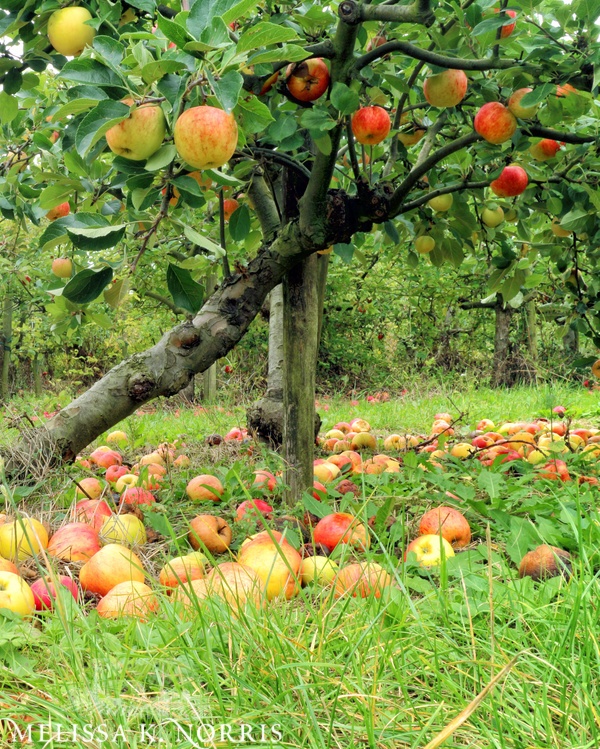
A: When we were putting in our blueberry plants. To give you some background, we have an orchard at the top of the farm, but because we plant very permaculture style, we have trees within our garden. So we have plants and trees intermixed everywhere, but we primarily have a big area up at the top where we’ve intermixed fruit trees, nut trees, berry bushes,, that kind of food forest style where things are at different levels. With the blueberries we were trying to decide within the world of blueberries which variety would work best for us. What you want to look for in that is the bloom times, of course, because you want to be able to flower after last frost otherwise you’ll lose your harvest. So you might have these gorgeous blueberry bushes, but then never be able to have blueberries. It’s like that with all of your fruit trees.
We’ve had clients tell us that that they have these beautiful, healthy, strong trees but they never produce fruit. A lot of times that’s where the mix-match is…that specific plant variety is not matched up tot when you have your frost days. For us with the blueberries, it made our decision making on which variety we should go with because we knew,in the world of gardening usually within a week, when our frost dates were. So we were able to pick specific varieties that bloom later almost ensuring that we get a harvest every year. We also have have some blueberries that are more middle ground. Some years we get a harvest off of them and some years we don’t. But most of ours are varieties were chosen so that we’d have larger harvests. We were able to figure out where to invest our money to get the best yield.
M: I love that tip. When we’re talking about orchards it’s also important to calculate chill hours for your fruit trees and berry bushes. Most of them require a certain amount of time for chill hours. This is where that very granular tracking like your mom is doing, writing down your specific temperatures every single day, comes in to effect. Off the top of my head, I believe it’s 40˚ or lower so many hours throughout the year in order for them to actually produce fruit. A lot of times you can be in a climate that’s borderline but if you have the data you may be able to plant something that you otherwise might not be able to just based on averages for your area. If you’re on the precipice of not having enough chill hours there are varieties of apples and other fruit bushes and trees that require less chill hours than others.
So that’s really important to have this data, especially when planning out more your perennials so that you are choosing the correct ones for you. In addition to bloom times, not just with your frost dates but also for your cross pollination. Because if you have an apple tree that’s an early bloomer and then you’re trying to cross pollinate it with one that’s a late bloomer, the likelihood of them having blossoms on at that same time is going to be for such a short period, you’re likely not to get everything pollinated.
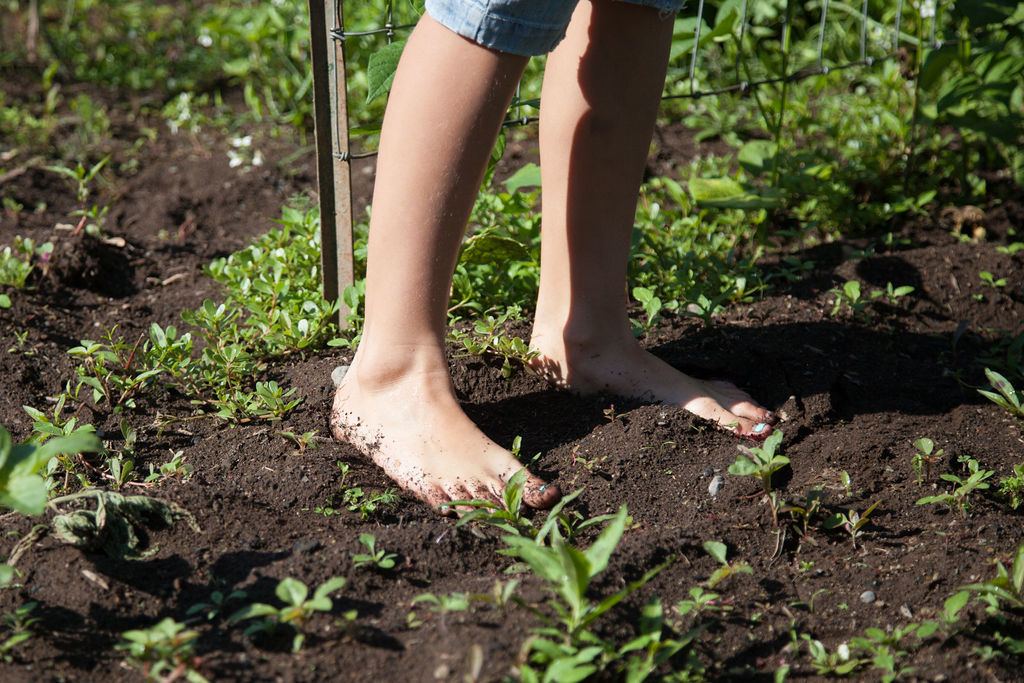
I love all these tips you’re sharing on how you’re using your data in your garden.
2. Build Up Your Soil
Could you give us some information on how you deal with your clay soil? How do you build up your soil?
Test Your Soil
A: Building up your soil, no matter what type of soil you have, it’s the absolute secret sauce of your garden success. It is absolutely 100% vital that you spend a little bit of time learning how to build your soil and the picking and choosing different things that you can implement depending on the type of soil that you have. What we always tell our listeners and consulting clients is that if you don’t know where to begin with that, it’d be worth your money to get a really good soil test. You can take a sample to your local extension office and they’ll give you a picture of your soil, however, it’s a small picture. We recommend Logan Labs. We’re not associated with them at all, it’s just our favorite place to go because they such amazing detail of where your soil is at and what you need to do to improve it.
Add Nutrients to Your Soil
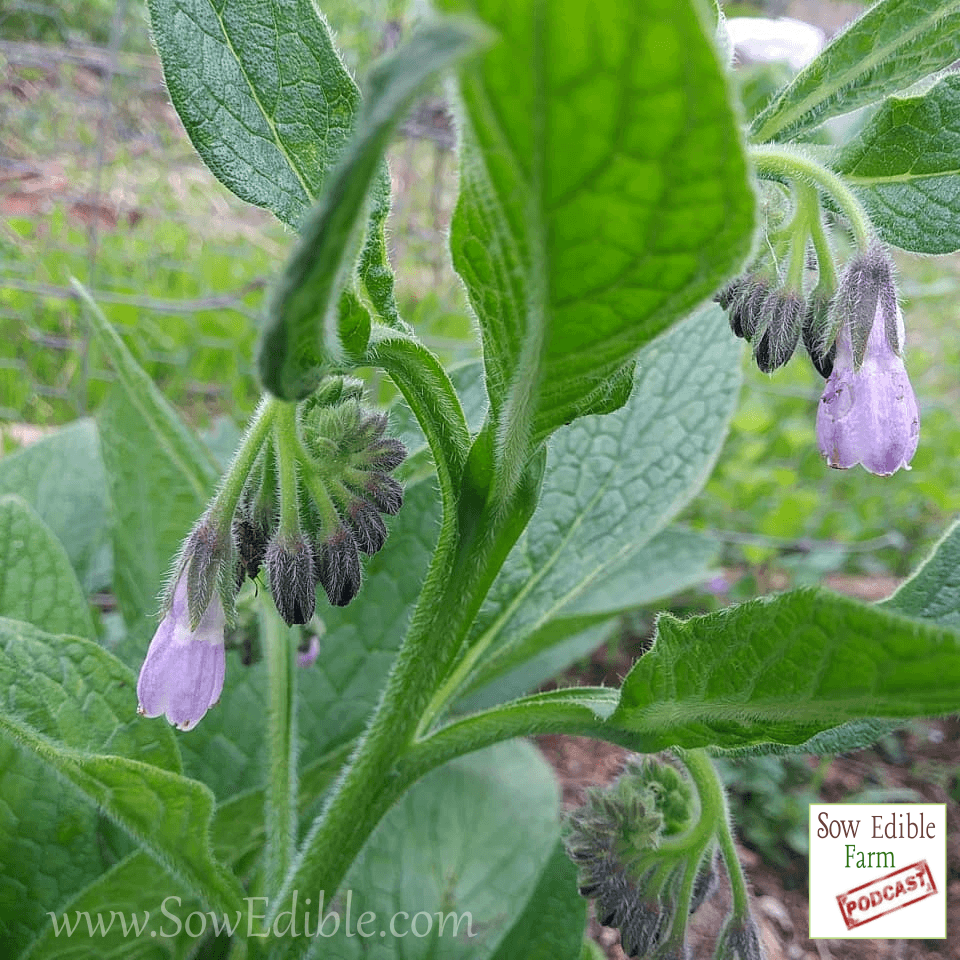
No matter what there are so many things that go into soil building. One thing, that would be a small thing, that would make a big difference no matter what type of soil that you have is implementing compost tea. You can use things that you have in your backyard; you don’t have to go out and buy anything fancy. Specifically if you have comfrey and making a tea out of that to spray on your garden. Comfrey is super high in phosphorus and potassium and trace elements when you use it in a tea to apply to your garden.
If you don’t have comfrey, don’t worry, you can use any green matter that you have. Like when you’re pulling your weeds, as long as they’re green and not dead.
Comfrey Tea Recipe
Comfrey (or any green matter)
Bucket
Water
Put green matter into bucket filling to past the top and then mashing down until it’s about halfway to three fourths full, pour water on top and put a brick or something heavy on top to keep the green matter below the water and let it sit. It’ll pull out all types of nutrients and minerals into the water creating a very healthy compost tea. After about 4 or 5 weeks, strain it.
To use: dilute with a 10 to 1 ratio. That would be 10 parts water to one part of the tea. Then spray on your garden.
For more detailed information and a handy printable visit Sow Edible Farm Comfrey/Compost Tea Recipe. We brew it constantly, about every two weeks and then use a backpack sprayer to spray it on the garden. We also put it on our garden about every two weeks.
M: I love that. Most county extension offices will perform that soil test for you, and they’ll do it for free or a small fee. I live in an area that my county extension office does not offer that. I use a very similar lab, Simply Soil Testing, to what you recommended. It’s a local lab and it’s the same thing that you can get the 12 macro and micro nutrient levels and they’ll go in depth on how much organic matter you have along with your pH. They’re relatively inexpensive for them to do the deeper level test and it’s been really helpful.
I don’t have comfrey but my neighbor lets me get some from his huge patch. I haven’t planted it mainly because I can’t decide where I want to plant it so I just haven’t yet.
A: Comfrey is super easy to grow. There’s two different kinds of comfrey out there so you want to be careful about which one you choose because one of the varieties will send out runners underground. That’s where comfrey gets it’s bad name because it’s very invasive.
The other type of comfrey that we use is Russian Bocking #4. It’s actually medicinal and non-invasive, so it’ll spread by the crown of the plant but it won’t send out runners, making it easy to manage.
Comfrey is also awesome in other ways, it’s not just for compost tea. People also use it for fodder for chickens and other poultry because it’s super high in protein. It’s actually higher than alfalfa, which is a little shocking. Some people grow it in huge fields and cut it to use as a part of a fodder system. Goats and rabbits also like it. I can’t imagine how much you’d have to grow for a goat. I think it’d have to be a special treat but for chickens and ducks, it’s a great fodder to use.
M: So the alkaloids doesn’t bother their system like it does us?
A: Correct.
M: I use it more for medicinal purposes for salves, creams and that type of thing. I didn’t even think to use it for chickens. Now I have multiple reasons to put it in.
A: You need to put it around your chickens. What we do is put it in around our chicken coops. We also interplant it in our garden because people in the world of permaculture use it as a chop in drop where you chop the leaves off and just lay it or drop it along your garden plants and let it decompose that way like a mulch.
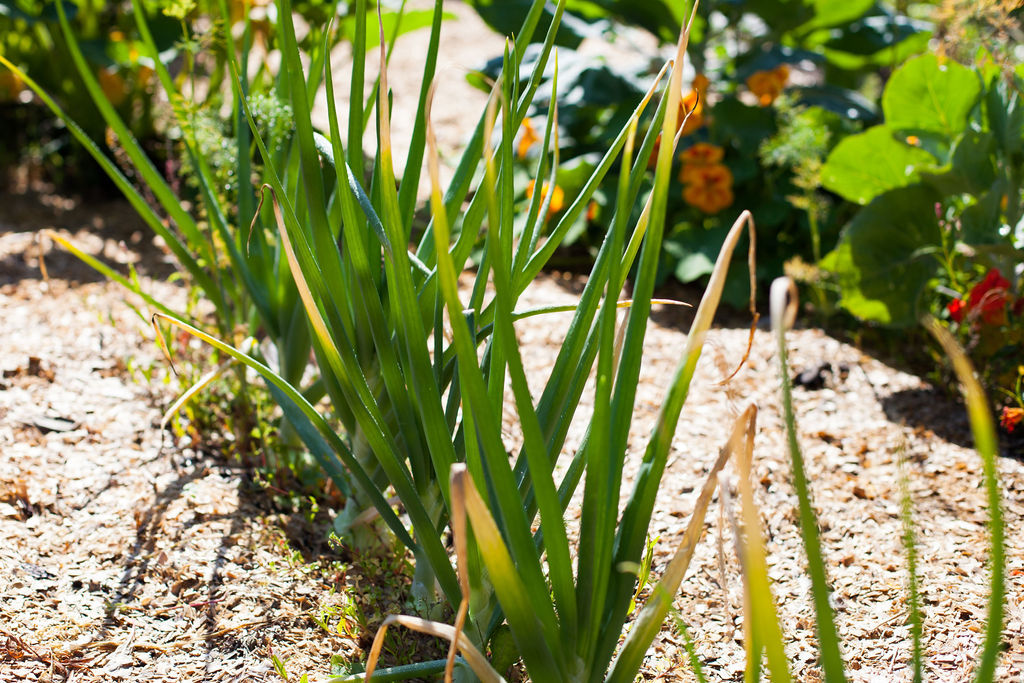
It also has multiple bloom times for your pollinators, so every time when you chop it you chop the whole thing off. It grows back really quickly and every time it does it’ll bloom again. So people also grow it for their pollinators, for their bees, because it does have the multiple bloom times so that’s another good thing about it.
Mulch & Natural Fertilizer
M: So that is how you build up your soil and a fast way to get nutrients to the plants. Do you have any other quick tips on building up your soil so that it provides you with amazing produce?
A: Yes, we are big time no till proponents. We teach people to till their garden once and be done, then cover it. We’re big on a deep mulch method with wood chips as well as implementing fungi and making sure you are applying natural fertilizer, such as chicken manure. So it’s a contained little system.
M: I’m with you. This is the time of year that I actually let the chicken coop get a little bit…full. Fall is the time of year when I layer the chicken manure around my perennials. The same with the garden beds and even in the high tunnel. I lay it on right now and mix in the leave leaves that are falling and let it sit all winter.
Fungi
I haven’t purposely introduced fungi though. Do you have some suggestions for people to start with fungi?
A: There’s so many different ones you can introduce and it really depends on the purpose you want to get out of it. Some that are edible that you can introduce and safely know what you’re eating. Now, in the wild world of mushrooms, you have to be extremely careful about just going out and picking mushrooms. I’m not a huge advocate of that, but there are certain mushrooms that you can grow that are very distinguishable. So if you specifically know that you put them in your garden, when they come up, they look like nothing else. You can’t mistake them for something that would normally be there.
The King Strapharia is one of my favorites but if you want to learn about that , the guru in my opinion is Tradd Cotter from Mushroom Mountain. He and his wife have this whole topic nailed down. They sell all different kinds of mushrooms and provide many options.
M: We do forage mushrooms (because of the vast health benefits of mushrooms) but we know exactly for our area the safety precautions. Mushrooms can be very dangerous so doing your homework and going out with someone with experience and not just an identification app is the best option to stay safe. I never thought about trying to inoculate some and grow them at home, especially as part of soil building.
3. Make a Detailed Plan
So we’ve talked about tracking and how important that can be as well as compost tea and different ways to build up your soil. Do you have another tip to go over that would make a big impact on the garden?
A: We sort of touched on it when we were talking about tracking, but making a plan. Taking the time ahead of time, before you start your gardening year to sit down and look over the entire garden and homestead. Look at the whole picture and determine what’s going really well, what needs to be improved or figured out. What areas rocked it and you want to do the same thing, just figuring out what you could do for the next year. Picking out your plants and seeds. If you have all this written down every year, it gets easier and easier because you can look back in your notes. Pick out those plant varieties that were fabulous. Or decide which varieties needed too much babying. What would be most efficient.
Also, deciding where you’re going to put your plants and mapping out all of that really gives you such a headstart when it comes time to actually put all the plants in the ground. This saves you time so that you’re not standing in the middle of your garden and trying to figure it out then. And you’re less likely to forget what you planted where because you have the plan written down.
Taking the time to figure it out ahead of time allows your year to flow so much easier. Of course, it’s not going to make it foolproof. You have to deal with weather and other things that are out of your control. But if you can step back and try to pinpoint all the things that you can control, get ahead of all your projects and figure out what materials you need, make sure you have them ahead of time or that you’ve planned it out so that you financially figured out how much it’s going to cost and determine if that’s a project you’re even going to do this year…all those things make it easier and make your garden flow so much better.
It really avoids overwhelm and the stress that a lot of us feel, especially when it seems like everything is happening at once. Like when the weeds are starting to grow, you’re trying to figure out what’s ready for harvest, and what needs more planted. If you figure all that out ahead of time, like what we do with month by month to do lists in order to get a good monthly picture of what needs done and what’s about to happen, that just changes everything for your year.
Even if you don’t have a planner, just get a notebook and write those things down. If you want to take it up a notch from there we have a Sow Organized 2020 Garden Planner that we created exactly for this. This is the planner that mom and I created to use just for ourselves but our listeners starting asking where they could get it so we put it out there.
I think if people would do this planning it would make such a difference.
M: I’m with you. Planning is huge. I feel that coming of the garden season right now is a good time because even if you didn’t take a lot of notes during the gardening season, most of it is still fresh enough in your mind that you can jot all of that down. At least the majority of it. You still know where crops were planted even if you’ve pulled them out so you can do a quick graph. You can even use your smartphone to take a quick picture and then next year, especially for crop rotation, you’ll know where everything was.
So jot that down now because by next year you’re not going to remember. I know it’s not just because I’m getting older that I don’t always remember. We’ve had our garden here for 21 years and they start to run together in your mind.
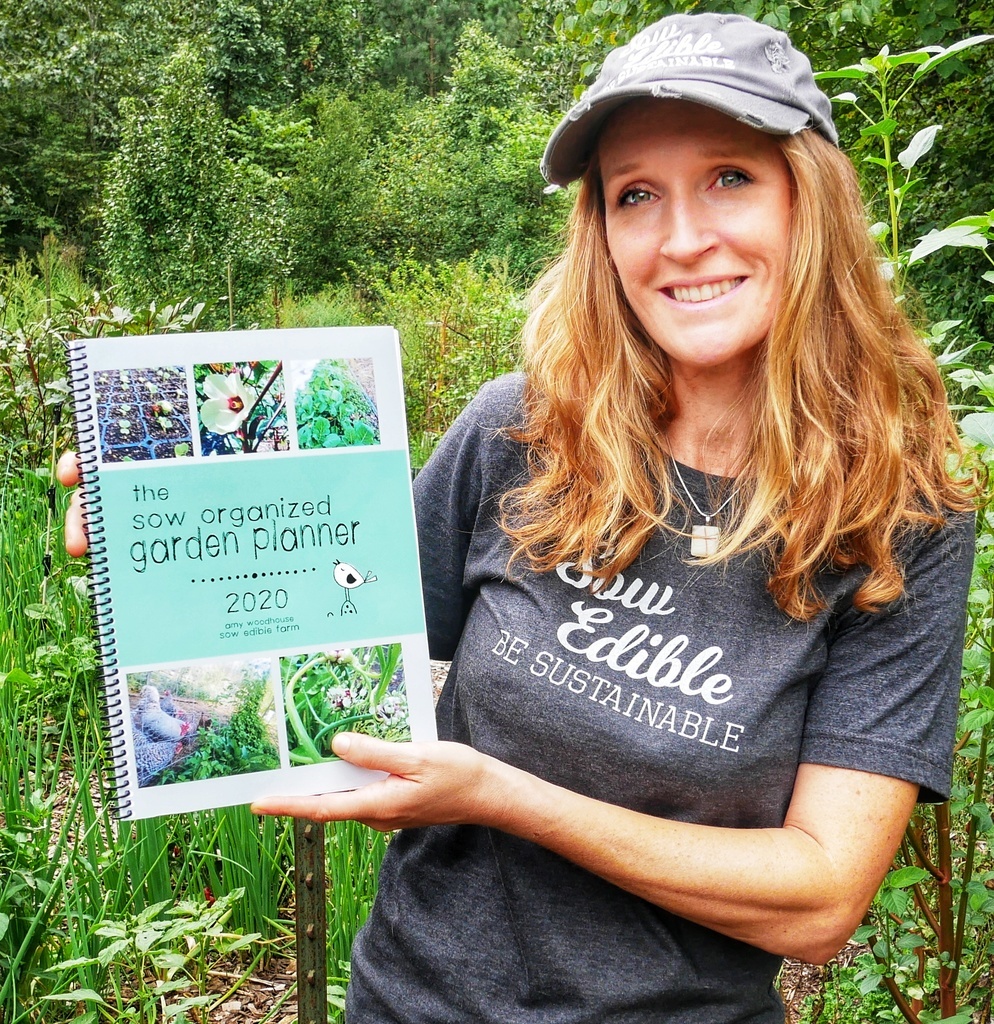
Amy can be found at:
Website: www.SowEdible.com
Instagram: https://www.instagram.com/
Facebook: https://www.facebook.com/
Podcast: https://podcasts.apple.com/us/



